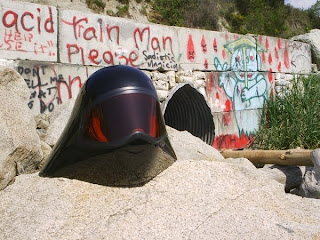As I write this, I know that the government is exploring the possibility of legal action, of some sort, against, possibly, Lance Armstrong. It is bizarre to me that the agency that might pursue this action is the Food and Drug Administration. In principal, I get it. In modern times, cheating often means ingesting drugs that enhance performance.
In cycling, blood is a big deal. If I could manipulate my otherwise pathetic blood so that my hematocrit jumped to, say, 49, the UCI limit, it would make a difference. I would be like Thor, god of Thunder. I would have “wind”, as they say. I could actually win a race, methinks.
Lance Armstrong is accused of this. To date, the government has not bothered to make public any of its intentions. Troubling- the delicate balance between the necessity of confidentiality and the demand of public disclosure. After all, the Food and Drug Administration is a public agency. I always thought they tried their best to make our food safe. Yet, people become sick and even die from contaminated food every year. To my knowledge, the FDA does not plan to accuse Lance Armstrong of killing anyone. Yet, without public disclosure of the government’s case, at this time, how do we know what the government is investigating or why?
Mind you, I am a lawyer. I take sides. I started to ride a bike because of Lance Armstrong. Naturally, I am disinclined to be enthusiastic about the government’s case. I used to be a government lawyer myself. A U.S. Army reservist, I transferred from the infantry to the Judge Advocate’s General Corps when I was admitted to the bar. I understand the ethics. The government lawyer has a duty to the public.
Yet, Lance Armstrong is most likely being accused of sports fraud in France. He was investigated for sports fraud in France by French prosecutors and the investigation dismissed for lack of credible evidence. What is the proper venue to allege that an American committed a crime in a different country?
To me, there is a question of standing. Does the FDA have standing to charge Lance Armstrong with a crime? In order for the FDA to move forward, it would seem that they would have to prove that Lance Armstrong committed a crime in the United States. What is a crime exactly? In this case, it is assumed that the FDA is looking at whether public funds were used to purchase performance enhancing drugs in a different country in order to improve performance for a race in a different country. This seems weird to me. The gist of the FDA’s case, then, must be that public funds were used to buy drugs. Yet, is it within the FDAs mandate to investigate the misuse of public funds? I thought the FDA had something to do with food or drugs.
The connection that the FDA is trying to make has to do with the United States Postal Service. While Lance Armstrong dominated races in a completely different country, his team was sponsored by the United States Postal Service, a quasi-government agency.
Benjamin Franklin, no less, established the first version of the U.S. Mail in 1775 and it is the only government agency mentioned in the US Constitution. However, in 1971, it evolved into an independent agency under the Postal Reorganization Act. As such, it is an independent establishment of the executive branch. During the time Lance Armstrong raced his bike in a completely different country, the Postal Service did not directly receive any taxpayer dollars and had not since the early 1980s.
This begs two questions: (1) if the FDA has to prove public funds were used to buy drugs, does the FDA have a case when no taxpayer dollars were used to sponsor Lance Armstrong’s team? (2) Even if there are complicated rules and monetary structures that satisfies the Judge on the first question, why the FDA? Put differently, why does the FDA have a dog in this fight? Shouldn’t it be the U.S.Postal Service that investigates and charges Lance Armstrong for defrauding the postal service? The postal service has one of the oldest law enforcement agencies and has huge power to investigate fraud related to not only the delivery of mail but to its own operations. If the postal service does not case, why does the FDA of all agencies?
Having been a government lawyer for a brief time, I can say that “politics” plays a bigger role in the public sector. If the postal service does not think there is a case, why does the FDA? Ambition?




























